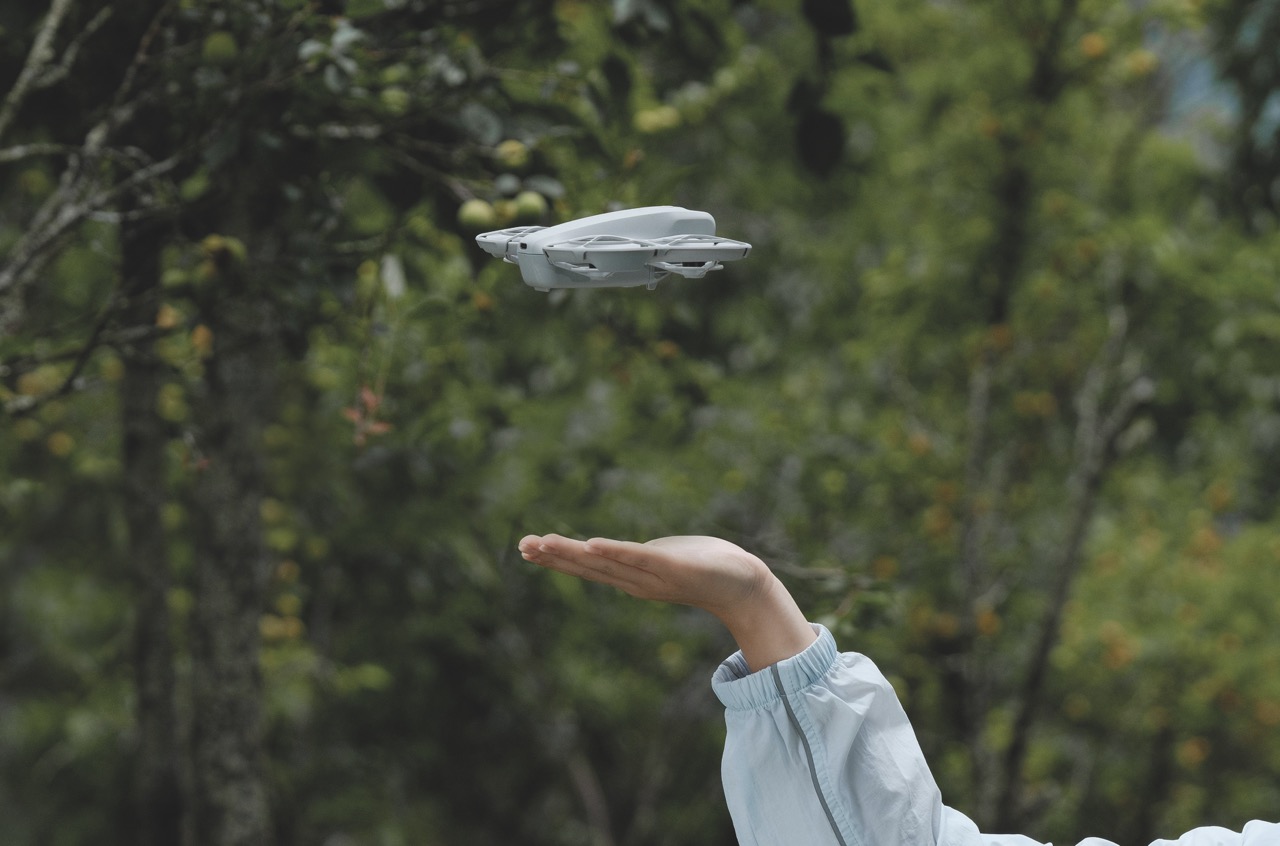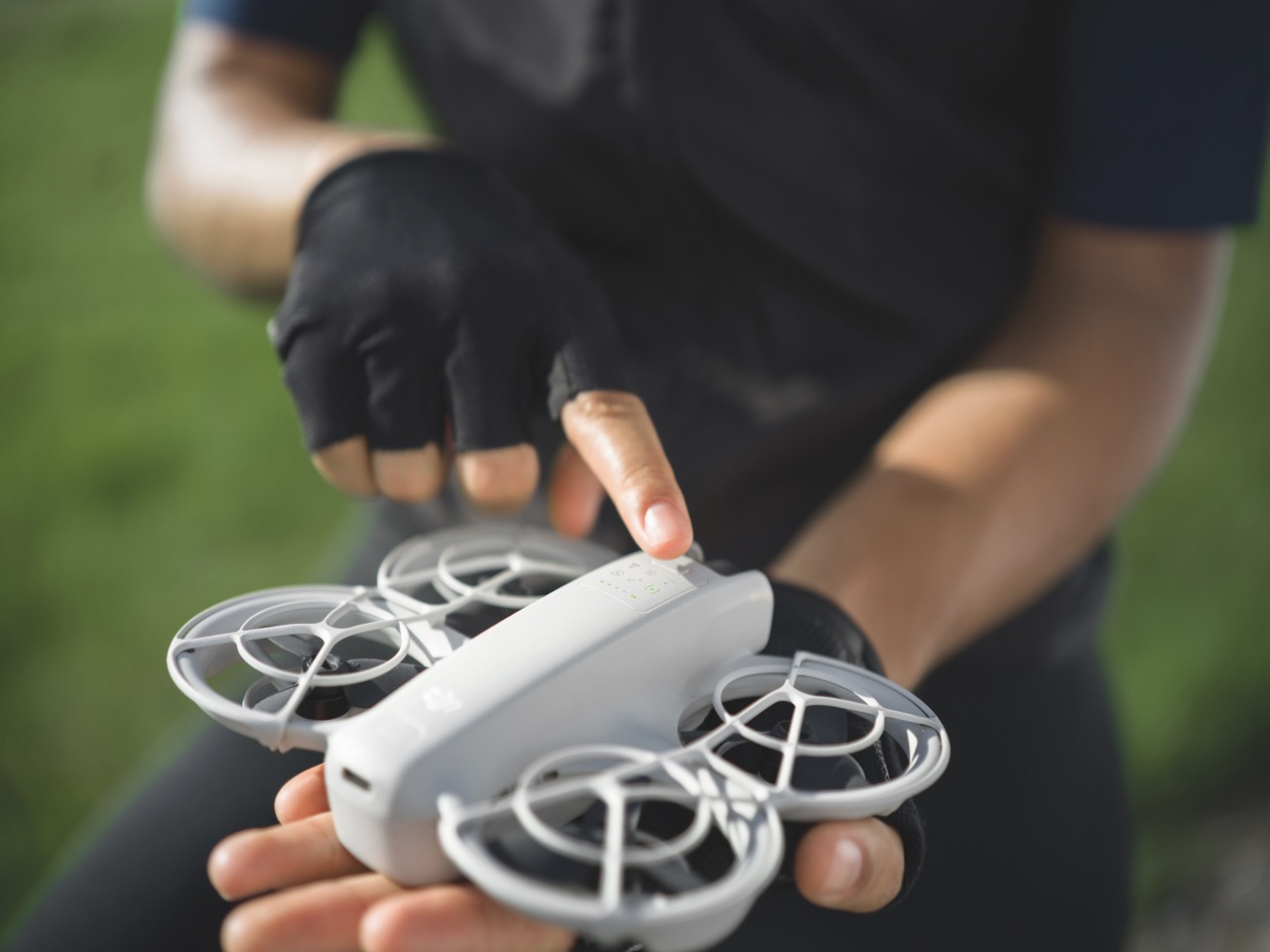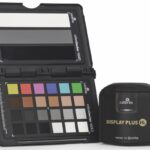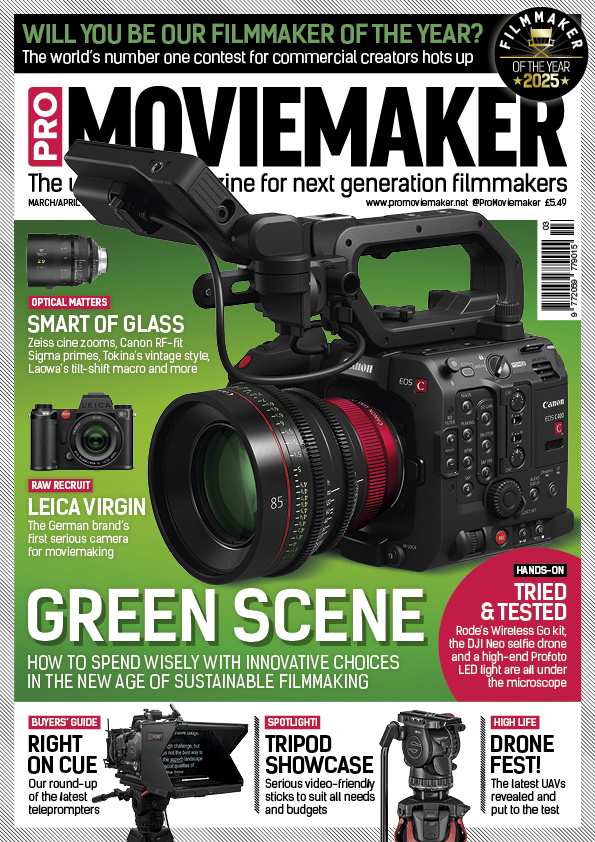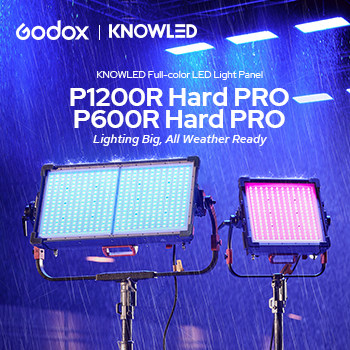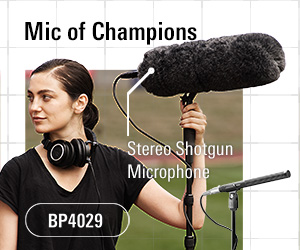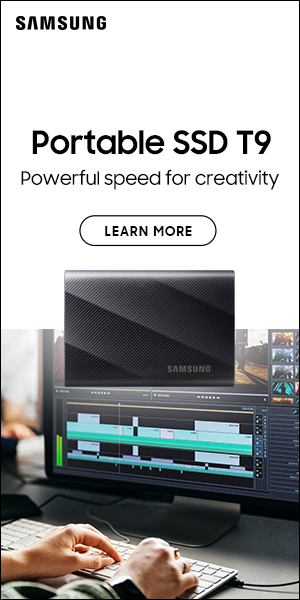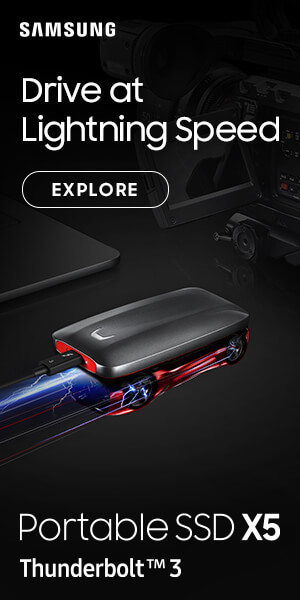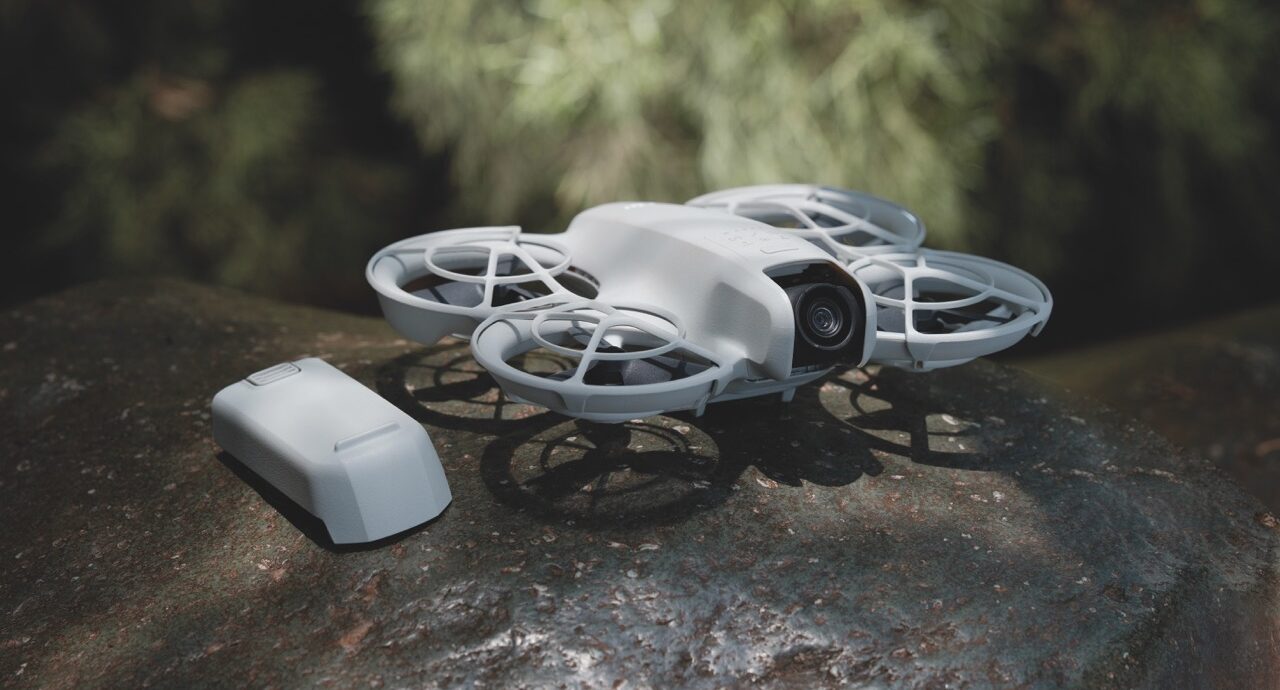
Mini test: DJI Neo
Posted on Feb 24, 2025 by Pro Moviemaker
We take DJI’s new vlogging drone to the skies to see how useful it is for pro filmmaking
Although DJI’s super-affordable 4K Neo is marketed as the ultimate selfie or vlogging drone, don’t write it off before you really think about what a small, simple UAV could do to up your production values.
Everyone knows that fast-paced commercial shoots can benefit from a few seconds of footage offered by the unique perspective of a drone, either as an establishing shot or following a subject for a few seconds. The problem is that this all takes time.
To get those shots, you need to first learn to fly safely and control the drone properly, get your official permission to fly by studying and taking an exam if your drone weighs more than 250g – which all serious ones do. Then you need to unpack it, often assemble it, link it to your phone and/or controller, wait for the GPS signal to be stabilised. Finally, you’ll get round to shooting a few seconds of footage – if you have the time that is.
But if you’d like something small to keep in your bag that pretty much flies itself, the Neo could be the drone for you. Especially considering it costs just £169/$199 for the bare drone itself – that’s all you need for fast, basic shots.
The Neo is DJI’s lightest and most compact aircraft and it doesn’t need a remote control. Since it weighs just 135g/0.3lb, you don’t need any kind of certificate to fly it. It features AI subject tracking to shoot 4K ultra-stabilised video and has a flight time of up to 18 minutes from a single battery. A spare battery is just £32/$39.
It’ll fly indoors or out, with full-coverage propeller guards to give some protection against the odd mishap. And as it doesn’t have obstacle-avoidance technology, you may just need them.
The beauty of the Neo is that it can be launched and landed on the palm of your hand, and you do not need to learn the basics of flight control to use it for many shots.
To fly it, hit the power button and then simply press the mode button to select the shooting mode. The Neo will automatically do the rest without the need for a remote control – you’re up and shooting within a few seconds. Of course, if you have a remote and know how to fly a drone, you can just use that. Or pay a little extra and buy one included in one of the Neo kit bundles that are available.
But the joy and simplicity of remote-less flying is that you can turn the drone on, set the mode and it should fly, take video and then return to your palm after shooting in record time. You place the Neo on your hand with the camera facing the subject. After it recognises the subject and the voice prompt finishes telling you which mode is set, it takes off automatically and starts filming. And, since the AI algorithms follow the subject within the frame, this is ideal for filming cycling, running or skateboarding. But you can’t get it to follow a car as only humans are supported for subject confirmation.
The Neo is designed for the selfie generation, so they can quickly get shots of themselves on location without any extra kit. Walk, cycle or jog along and the drone will follow. It even smooths your skin out for a glamorous look, if you want, though most serious users probably won’t!
Key is the different modes: Follow, Dronie, Circle, Rocket, Spotlight and Custom – the only mode you need to set using the DJI companion app on a phone. Custom modes include Helix, Boomerang and Direction Track. All these should be pretty familiar to DJI users as most of its drones already have these so-called Quickshots, and they are very useful when in a rush. They can also be set via phone app, which recognises voice commands.
Follow mode is self-explanatory, with the drone tailing the subject at shoulder level from around 3m behind. Dronie mode keeps the camera pointed at the original position, while flying backwards and up to reveal the scene. It then reverses direction and returns back to the original position, all while filming automatically. Circle mode keeps the camera facing the subject as the drone does a circle around at a preset distance. Rocket is when the drone flies directly upwards, with the camera pointing down, to reveal the location. And, lastly, Spotlight means the drone takes off and points the camera at the subject, but moves around to keep the subject in frame.
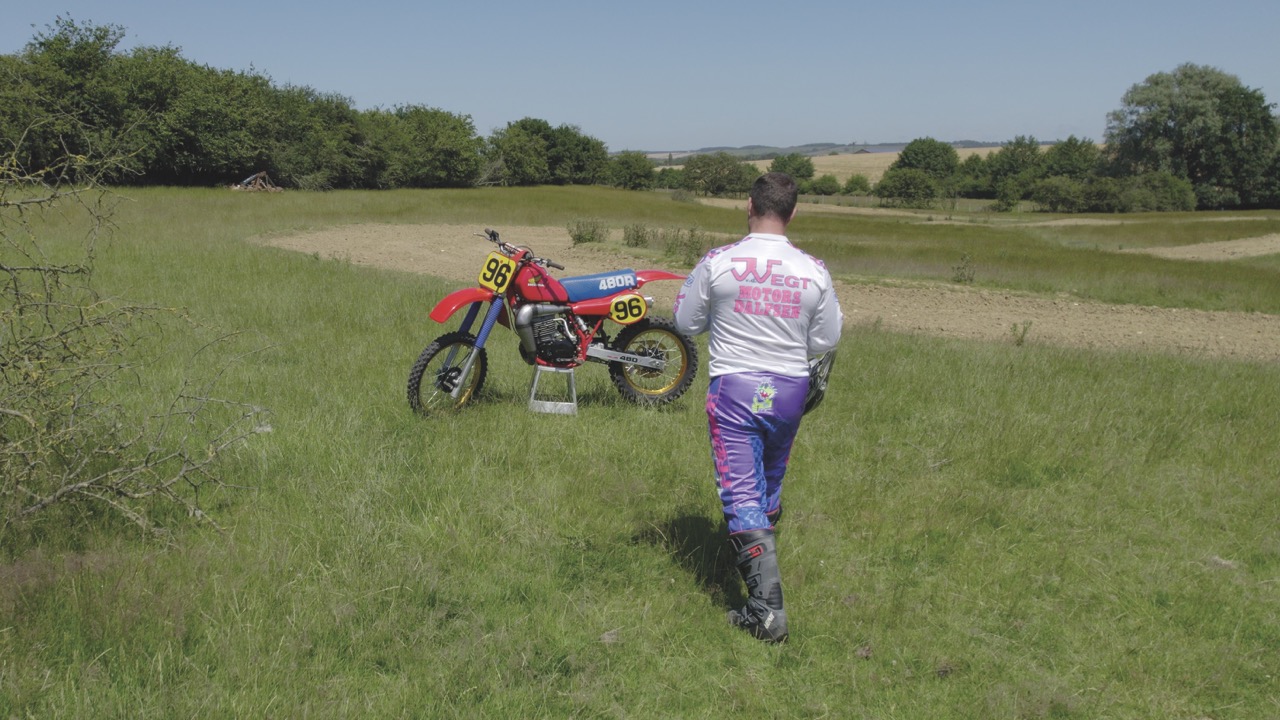
In Direction Track, you can walk towards the drone and it flies backwards to record you approaching. To stop this, the subject pauses for a second and the drone returns to land on an outstretched hand.
These might not be technically groundbreaking moves, but they can be done in a matter of seconds and you don’t need to link up your phone, wait for GPS and do any manual controls. It’s a seriously fast, simple way to get some cool shots to add to your film.
There are limitations and image quality is not the best, but it is 4K in up to 30p or HD in 60p. There are no fancy Log settings or high-bit-rate options, but for a quick shot it’s a top addition. It may only have a single-axis gimbal, but electronic image stabilisation smooths things out.
One of the main gripes is that Follow mode doesn’t give a particularly high speed of flight, so if your subject is riding a bicycle briskly the Neo will struggle to keep up. With no obstacle avoidance sensors, riding through tree-lined trails means the drone can crash into branches as it tries to keep up. But for moving subjects of up to around 13mph, it’s not too bad. Shoot someone jogging and it’ll do just fine.
The Neo will go as fast as 35.8mph if you revert to manual control and pair it with either a smartphone alone or a smartphone linked to the DJI RC-N3, RC-N2 or RC 2 controller. This means you take full control of the drone, like on any other DJI product.
If you want the FPV experience by splashing out on DJI Goggles 3 and RC Motion 3, you have a decent small FPV drone. But then you’d be paying almost four times the price of the basic drone to make it work, when you’d be better off looking at different options.
With 22GB internal storage, the Neo can save up to 40 minutes of 4K/30fps video or 55 minutes of 1080p/60fps video and it will transfer the footage by Wi-Fi. Otherwise, plug it into your computer using USB-C.
Yes, it has limitations in image quality and frame rates, but for the asking price and super-quick start-up time with preset moves, it can record unique footage to spice up your project.
£169/$199
Specifications
- Sensor: 1/2in CMOS
- Lens: 13mm equivalent
- Maximum aperture: F/2.8
- ISO: 100-6400
- Recording format: MP4. EIS Off: 4K (4:3) 3840×2880 30fps, 1080p (4:3) 1440×1080 60/50/30fps. EIS On: 4K (16:9) 3840×2160 30fps, 1080p (16:9) 1920×1080 60/50/30fps
- Still images: 12-megapixel JPEG
- Memory card: None. 22GB internal storage
- Stabilisation: Single-axis mechanical gimbal (tilt)
- Maximum horizontal speed: 16mps/35.8mph in M mode
- Maximum ascent/descent speed: 3mps/6.7mph
- Maximum wind speed: 8mps/17.9mph
- Maximum flight time: 18 minutes
- GNSS support: GPS, GLONASS
- Maximum operating distance: 7km/4.3 miles
- Sensors: Downward 0.5-10m range
- Battery: 2150maH
- Connection: 1x USB-C port
- Dimensions (wxhxd): 130x157x48.5mm/5.1×6.2×1.9in
- Weight: 135g/0.3lb
Pro Moviemaker rating: 8/10
A super-compact drone that’s fast to start and can fly by itself
- Pros: Small, lightweight, affordable
- Cons: Image quality, speed
This review was first published in the March/April 2025 issue of Pro Moviemaker

